Sago palm responds!
>> Sunday, June 16, 2013 –
foliage
I've had a Sago palm growing in a pot for a few years. It's a plant I have a love/hate relationship with: I love the way it looks and how undemanding it is, but I hate how prickly its leaves are. Having to overwinter it indoors can be quite painful, especially as it gets larger.
If you're not familiar with the way these misnamed "palms" grow -- they're actually Cycads -- they put out a single "row" of new leaves typically just once a year. Last year this one did not put on any new growth at all, so I'm really pleased to see it doing so this year.
How can you not love the new growth on these?
The plant sustained a bit of damage last winter when it got a bit colder than forecast on a couple of nights, but overall it looks quite good:
I believe the plant saw temperatures in the mid-20's F, which caused a bit of leaf damage. Maybe a few degrees lower?
The repotting I did a month ago was just what this plant needed apparently:
New pot equals new growth!
The one drawback to this: the plant will be even more difficult to overwinter indoors next winter.
If you'd like to learn more about this family of "living fossils" the Cycads, visit Gerhard's site: Bamboo, Succulents, and More. Cycads are one of his favorite plants, he has several in his collection, and he knows quite a bit about them. (Well, much more than I do at least.)
A fascinating plant family to which a plant person can easily get addicted. Since I don't believe there are any of these that will overwinter outdoors in my zone 6 climate I'll just enjoy the common one I have and try to avoid its pokey tendencies next winter.
.

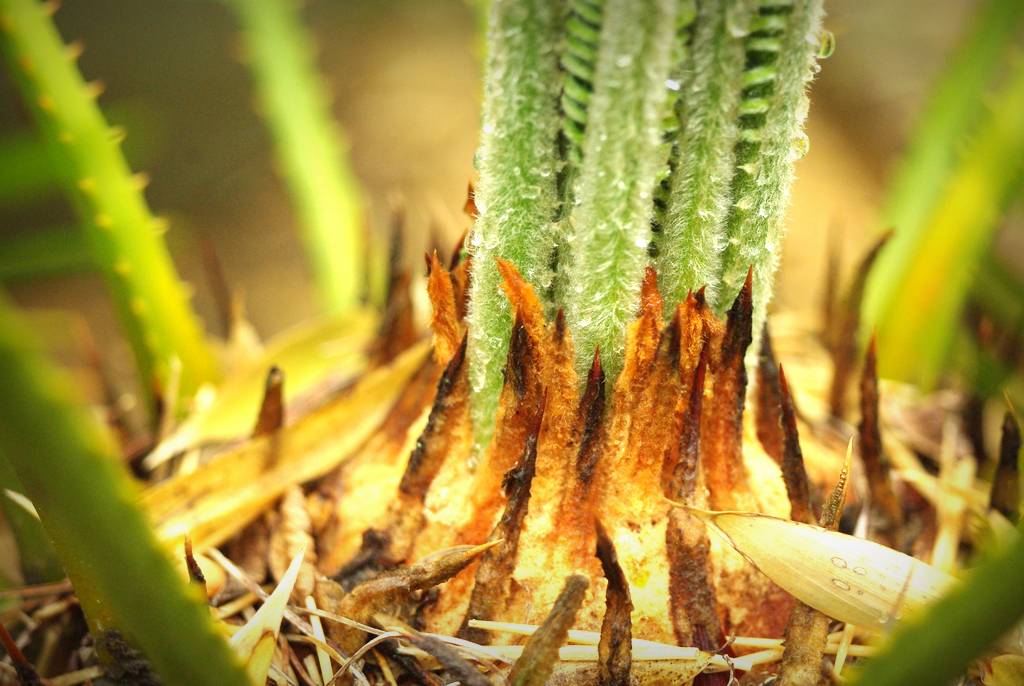

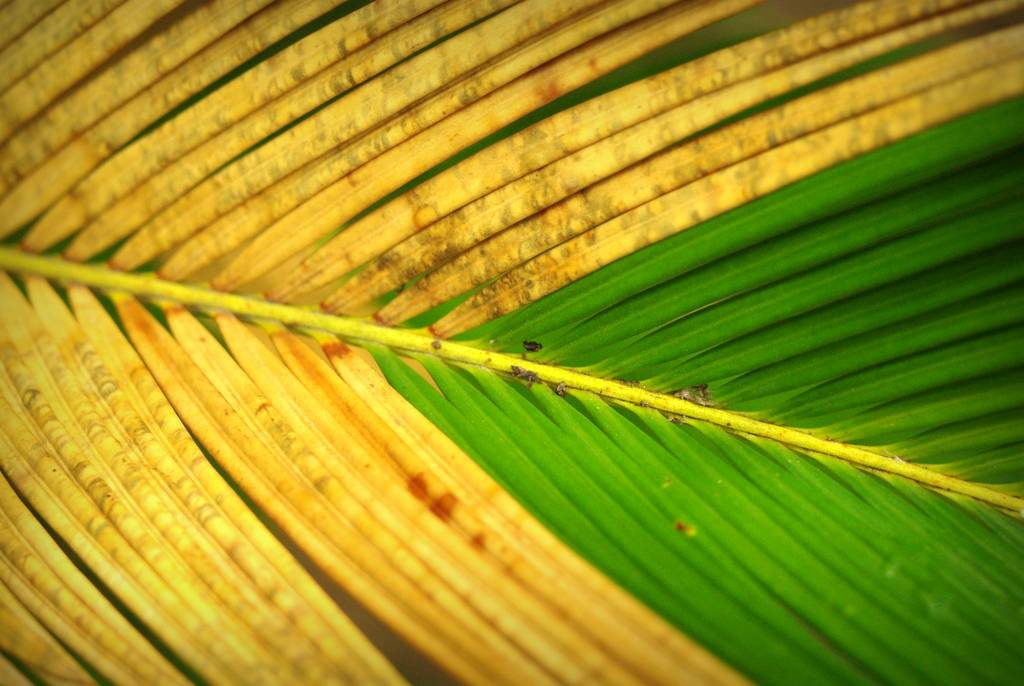
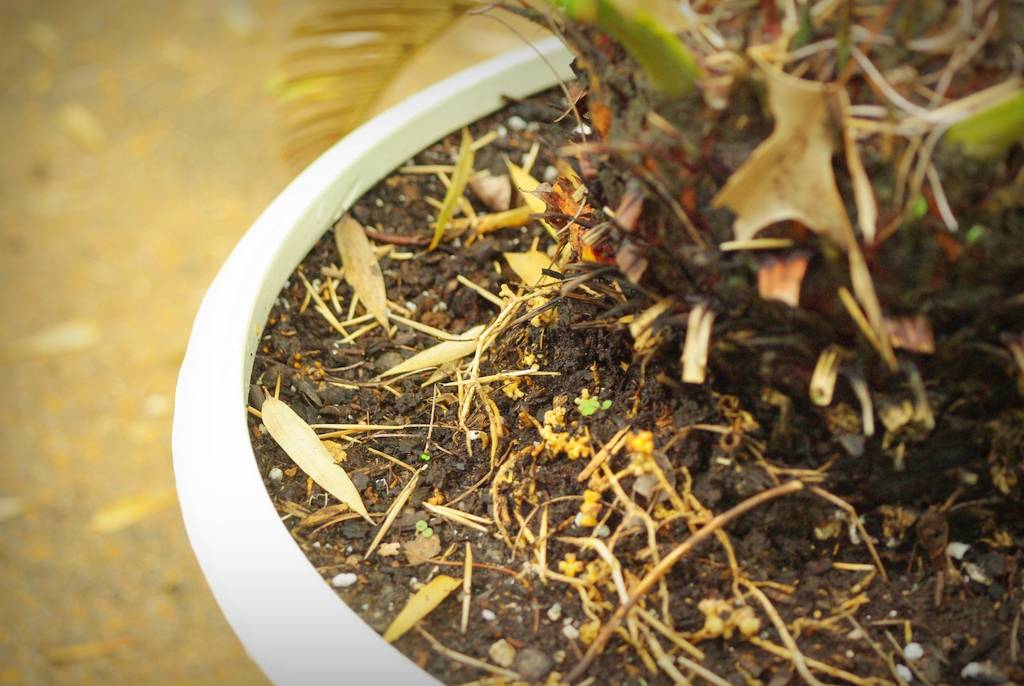
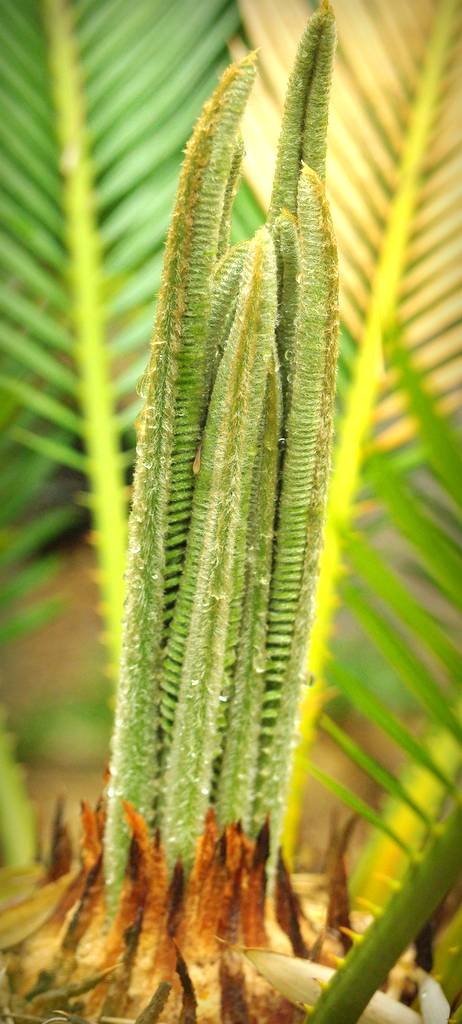

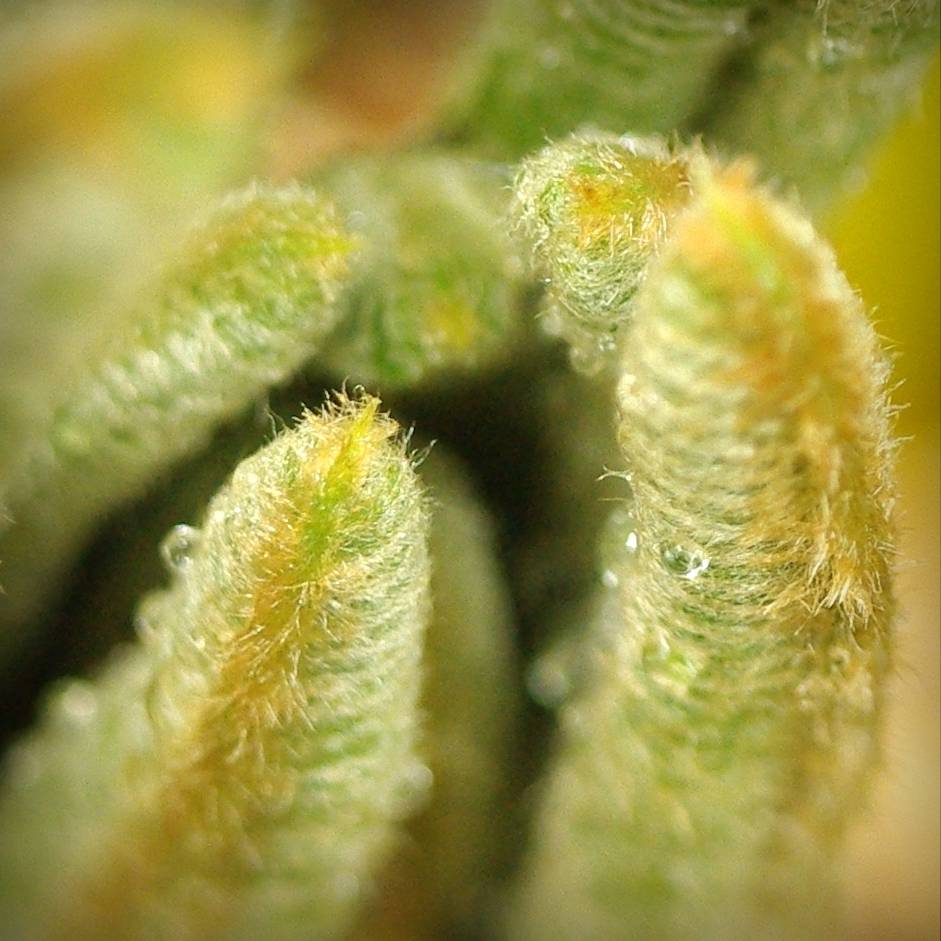




What a coincidence, I'm going to post about my sago palm tomorrow. It's pushing 31 (!) new leaves. The biggest flush ever!
I've read that repotting promotes flushing, which certainly seems to be the case with your plant.
Gerhard: is it possible to get 2 flushes in a year?
Looks like a pretty cool plant.
You might want to consider wrapping it the way the Japanese do in their gardens. I'm not familiar with St. Louis weather but the low winter average of Japan is around -5 to 5C. I have a post somewhere where they showed pictures how to do it. No English details though.
As for flushes, my Cycas revoluta has flushed up to 3x a year. I find that my Cycas spp. flush more frequently than my Encephalartos and Ceratozamia spp.
Off the subject of this post, but I was wondering if you'd consider doing a post about how one collects/harvest prickly pear pads for rooting. (Your "Prickly Pot" post was great for what to do once you have them.) Also, I have a friend who has some wild prickly pear she wants moved (or chopped out). Can the whole plant be transplanted?
Teri: sure! If I actually have time to do some planting when the ground is dry enough I'll plant all of my Opuntia and talk about it then. In the meantime though, it's pretty simple: just snap a pad off at the joint (where it connects to another pad), let it sit outside for a few days to let the wound scar over, then stick it into the ground. Too much moisture would be bad, but a little is fine. If you expect lots of rain, probably best to let it root in a pot and keep the pot somewhere where it won't get rained on.
Alan, high-nitrogen fertilizer is said to promote flushing. Here's a fairly scientific article: http://lib.store.yahoo.net/lib/cycads/NewDevelopmentsinFertilizingCycads.pdf
Thanks Alan!